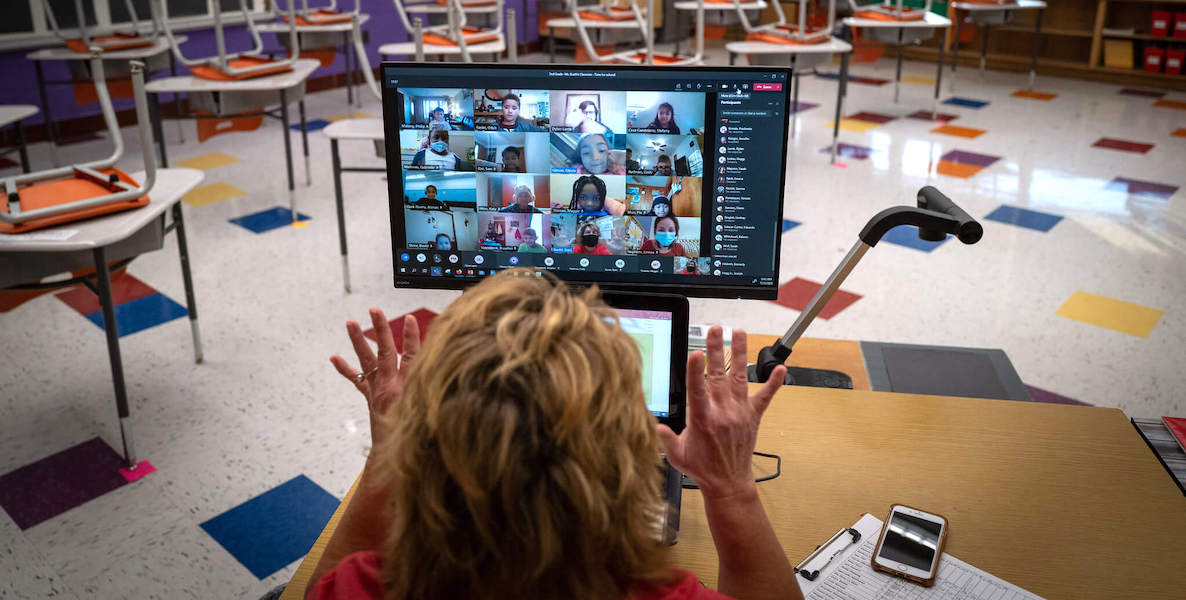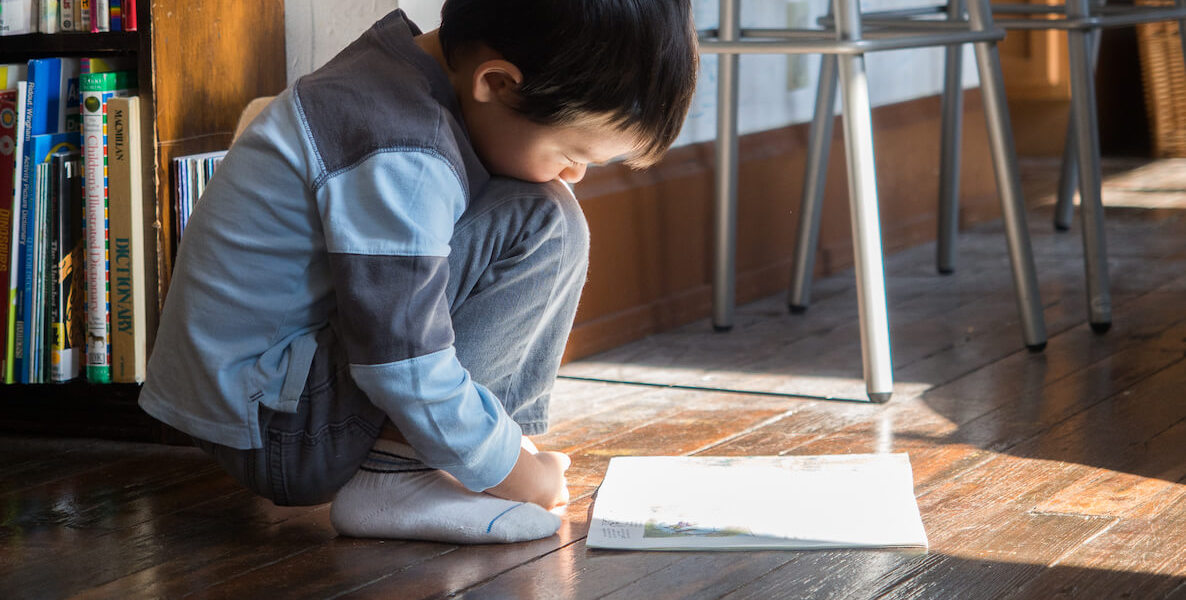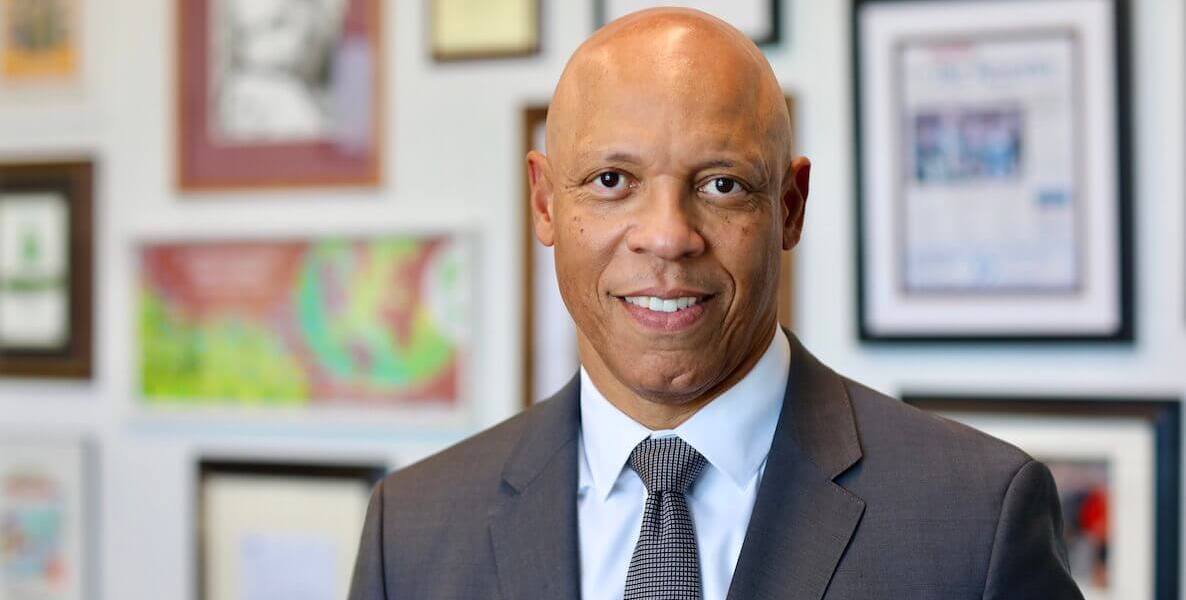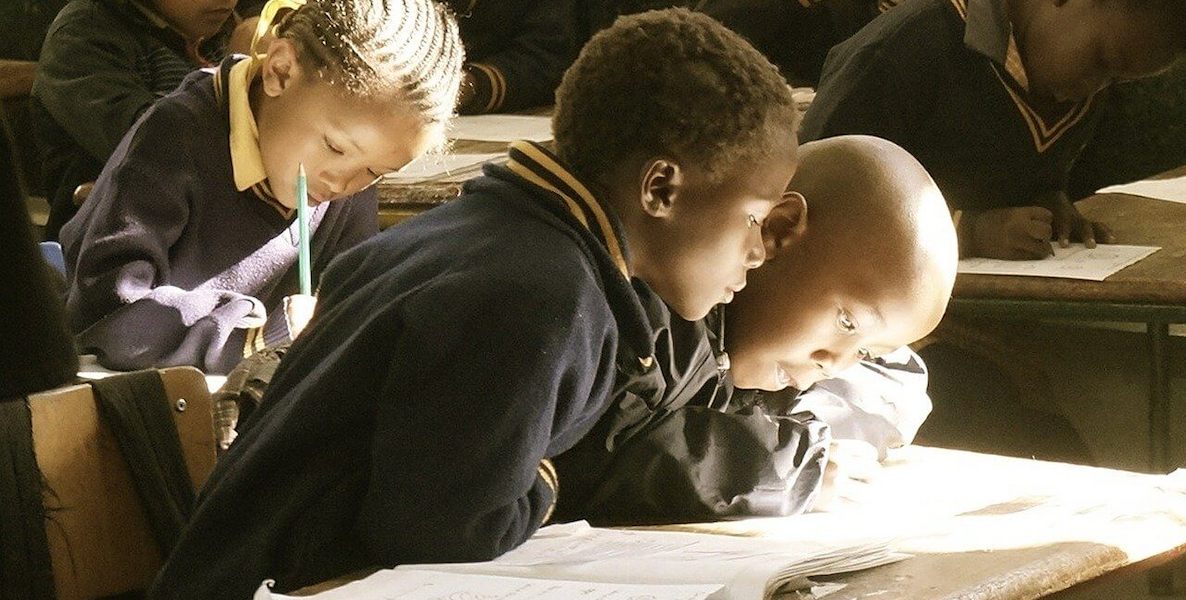to this story in CitizenCastListen
As the small neighborhood high school—a partnership between national nonprofit Big Picture Learning, the School District of Philadelphia and the Philadelphia Housing Authority—has pivoted to online learning, grades have dipped, connections have slipped and the experience for teachers, administrators and students has often been exhausting and frustrating.
But what hasn’t happened at Vaux is also extraordinary: They haven’t lost track of any of their students.
“We have been able to stay in touch with all students at Vaux,” says David Bromley, executive director of Big Picture Philadelphia, which also runs the alternative high school El Centro de Estudiantes. “All the kids are still engaged—not at the same level, but they are there.”
“We all know there will come a day when Covid-19 is conquered, a day when we can go back to normal,” Cleveland Schools CEO Gordon said. “But should we? What if this isn’t just a pause—what if this is, instead, a reset?”
In these times, that’s a not insignificant victory that reflects the heart of Big Picture’s mission. The 400 students at Vaux, all economically disadvantaged, spend all four years in classes of about 18 students, with the same homeroom advisor who devotes part of every week to connecting with her charges, to understand who they are, what issues they deal with outside of school, what their families might be going through, referring them to specialists and other help as needed—and also what their students’ strengths, passions and dreams are.
As Bromley puts it, “Our whole theory of change is that relationships lead to rigor.”
For many reasons, Vaux is not a typical Philly high school; its small size alone makes it an outlier. But if there’s a lesson to be gleaned from this year of pandemic learning, it’s that we can’t go back to typical.
Get involved with schoolsDo Something
But almost exactly a year from when schools shut their doors, as some students start to trickle back to their classrooms, it’s worth considering: Is back to normal really where we want to be? Or should we use this moment to think differently about how we educate students in Philadelphia?
What we know about the Covid slide
First, let’s look at what we know about the so-called Covid slide: In January, the District released a report comparing standardized test scores in reading and math from last winter (when students were schooling in person) to this past fall, for 1st to 5th graders and 6th to 12th graders.
As with an earlier study, caveats abound, but the overall results, while not heartening, were in some ways not as bad as feared. (This seems to be true nationally, as well.) On average, the 41,000 1st to 5th grade students who took the tests in both years were about 6 percentage points less proficient in reading; the most troubling piece was a 14.5 percent drop in reading skills among students who transitioned from kindergarten to first grade this school year.
Among the 21,000 middle and high school students who took both sets of tests, the change in both reading and math, on average, was less than 1 percent, with some grades actually improving their proficiency year over year. New 7th graders struggled the most, with math scores dropping 5.35 percent on average.
As always, economically disadvantaged students fared worse than those who are not economically disadvantaged, but overall the gap between the groups has not increased since Covid, at least based on those tests.
More worrisome, though, were the students who weren’t counted at all because they are not in school. Attendance has fallen particularly among Black and Latinx children—with only about 60 percent showing up 95 percent of the time (the District’s metric for good attendance), versus 80 percent for white children. Second grade is the worst: The overall percent of 2nd graders showing up to class regularly dropped from 73 percent in October 2019 to just 59 percent in October 2020.
This is a year into the pandemic, and the City is still thinking about a plan for supporting students outside of school. It’s like a repeat of last year, when Superintendent Bill Hite and his team seemed to count on a (failed) hybrid learning plan to keep kids on track in the fall.
This is part of the reason the District has been pushing to get younger students back in the classroom—an effort that has sucked up all the air in the room, for months, while teachers, parents and administrators wrangle about the best and safest way to do in-person instruction in school buildings that were unhealthy even before a raging airborne pandemic hit. That particular argument, for pre-K to 2nd graders, continues into next week— despite (oft-delayed) plans to open the buildings to students on Monday.
“Second and 3rd grade are so important to fundamentals. We need to get them back into classrooms, and think about out-of-school ways to support them,” says Cynthia Figueroa, deputy mayor for the Office of Children and Families. “There are some things that have happened that are positive, and we can take with us,” including the quick uptick in the use of technology. “The fact that we could do virtual—is there really a snow day anymore? What could we be doing in the summer? How do we make it not just this summer, but every summer? What about the length of the year, or the school day?”
The progress Philly has—or hasn’t—made
This is a year into the pandemic, and the City is still thinking about a plan for supporting students outside of school. It’s like a repeat of last year, when Superintendent Bill Hite and his team seemed to count on a (failed) hybrid learning plan to keep kids on track in the fall, rather than plan for the reality we found ourselves in during the summer, when the virus was clearly not going to disappear.
This week, Dr. Malika Savoy-Brooks, the District’s chief academic supports officer, says the District was set to launch small group virtual tutoring for middle and high schoolers after school hours. Even that effort is small right now: Out of about 200,000 students, just 3,000 students so far have been referred for tutoring by their teachers or parents—though it remains to be seen how many will attend—and 51 District teachers have signed up to be tutors. (They are paid extra for this work.)
And now—in February—the District and the City are in the process of creating a summer plan. Savoy-Brooks says the programs will be available for up to 60,000 students, varying by age: Career immersion, college prep and grade recovery programs for high schoolers, including what the district is calling “Quarter Five” for students at risk of failing a class. A kindergarten and first grade bridge program. And the biggest program, for elementary schoolers, combining academic supports and social/emotional learning with existing recreational programs at 12 to 16 regional locations, for between four and eight weeks.
From around the countrySolutions
All these extra learning opportunities are positive steps, clearly needed. But it’s also infuriating: Aren’t these steps the District should have taken much earlier in the school year, when it became clear that we weren’t getting back to normal any time soon? Hasn’t it been obvious all along that students will need additional help during and after school time? Hasn’t it always been clear that if normal isn’t good enough, these extraordinary times call for extraordinary efforts?
Attendance has fallen particularly among Black and Latinx children—with only about 60 percent showing up 95 percent of the time (the District’s metric for good attendance), versus 80 percent for white children.
It’s not like the City doesn’t know how to get it right: The immediate and mostly successful effort to ensure students had access to free food last spring when schools closed was really laudable. And, thanks to Comcast and philanthropy late last summer, the District managed to get Chromebooks and internet access to tens of thousands of students who would otherwise be even further behind than they are now—something other districts around the country struggled with.
How about taking that same innovative and strategic approach to the fundamental job of teaching children during—and after—the pandemic? Others are doing it.
Solutions that are working in Philly and beyond
Schools like Vaux have upended the traditional way education has worked in this country for most of the last century, with teachers teaching, counselors (when they’re available) counseling, and families providing the rest. No one thinks that’s enough anymore—Savoy-Brooks notes that this year’s curriculum across the District includes a social-emotional learning program—but there is rarely talk of the dramatic shift in approach that our schools so desperately seem to need.
“School needs to be a place that’s not just driving curriculum home, but is a community,” says Michael Gottfried, a Penn education professor who studies attendance and truancy. “We’re seeing the failure of that not happening with the pandemic: Schools didn’t serve as a community, and kids didn’t want to be a part of that.”
Vaux has a Job Corps and a CVS training facility on site, along with Mighty Writers, and a tax agency and financial advisor for families. It lets students starting in 10th grade leave school to pursue internships in whatever interests them—something even now 77 percent of students are managing to do. It has on staff “resilience specialists” who are trained social workers and psychologists, who can refer students to housing, health care, counseling or other services. And there is time built in to the schedule for students to work and commune together, so they are also support systems for each other.
Even Bromley acknowledges that Vaux is not easily replicable: Big Picture has a unique relationship with the District and it raises outside money to pay for the extra supports. But it is also not impossible: Under Mayor Kenney, the City has tilted in this direction with its 17 community schools, which bring social services into school buildings tailored to the neighborhood to help both students and their families.
Metro Nashville Public Schools has gone even further this year, launching a Navigator program, akin to a citywide version of Vaux’s advisory, to connect school staff with every single family, regularly and continuously. (Other parts of the country, including in Southern Illinois, have been experimenting with Navigators even before the pandemic.) Between August and December, according to an article in The 74, 5,600 school district employees—including teachers, lunchroom workers and office staff—made about 220,000 calls to parents and students.
Those calls revealed more families with more needs than they expected—students that might have been lost. Instead, they helped them connect to housing, food and health care, solved technical issues with online learning, referred them to mental health and other social services. Metro Nashville plans to continue the Navigator, even post-pandemic, and to study whether it results in better attendance and school performance
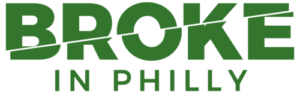 Other school districts have adapted with new teaching models that are counter-intuitive. In Burien, Washington, outside Seattle—where 71 percent of students live in poverty—they’ve spent the year teaching with an “acceleration” mindset normally reserved for gifted students. They start every unit with pre-tests, so teachers know where students are, group the kids into learning cohorts to help teach each other, and then use asynchronous time to catch students up who are struggling with the concepts.
Other school districts have adapted with new teaching models that are counter-intuitive. In Burien, Washington, outside Seattle—where 71 percent of students live in poverty—they’ve spent the year teaching with an “acceleration” mindset normally reserved for gifted students. They start every unit with pre-tests, so teachers know where students are, group the kids into learning cohorts to help teach each other, and then use asynchronous time to catch students up who are struggling with the concepts.
Larger school districts, like in San Diego, have taken a similar approach to teaching math, based on research from schools affected by Hurricane Katrina, that found remedial skill recovery didn’t actually help students get back on track.
“We’re really trying to stay in a mindset where we’re not talking about learning loss,” said Susanne Jerde, Highline’s chief academic officer told The74. “It’s important to understand that some students have learning loss, but we also want to build on the fact that our students have other opportunities to grow.”
Students in Philly were dramatically, tragically, academically behind even before Covid-19. Just take seventh graders, as an example: Last year, before schools shut down, only 26.84 percent were reading at grade level, and only 40.78 percent were grade proficient in math.
Closer to home, Philly-based Springboard Collaborative has had success for years helping students maintain reading skills in the summer months by working with parents to help set goals, use proven methods of literacy learning, and celebrate milestones. (U.S. Rep. Chrissy Houlahan was Springboard’s former COO.)
They’ve been working with schools—including a few in Philadelphia—for years to coach teachers in what they call Family-Educator-Learning-Accelerators (FELA), 5 to 10 week learning cycles that have proven to boost literacy learning in students.
The key to Springboard’s success is leveraging families, which brings more learning into the home, alleviates some pressure on teachers, and makes parents more invested in their children’s education. When the pandemic hit, the organization developed a virtual (lower cost) version of its programming, and worked with several New York City schools to test its efficacy. After six months of working with teachers and families, students using Springboard’s FELA method showed six times the progress of their peers in reading.
In Cleveland, which like Philly last spring had to quickly ramp up student access to internet and devices, every Wednesday this year is set aside for asynchronous learning, allowing teachers to work individually and in small groups with students who need extra help, and to talk with parents about their concerns. The District, which has also seen a significant drop in attendance, in December launched a deliberate effort to find missing students, including by knocking on doors, checking social media and calling other districts to find out if they’ve enrolled elsewhere.
Perhaps most striking about Cleveland is CEO Eric Gordon’s recognition, as he stated in his State of the Schools address in September, that the pandemic has forced a real, close look at the way the District has worked—or hasn’t—to teach its children.
“We all know there will come a day when Covid-19 is conquered, a day when we can go back to normal,” Gordon said in his speech. “But should we? What if this isn’t just a pause—what if this is, instead, a reset? What if this is our chance for us to closely examine the inequities in our communities and think differently about how to address them?”
The Citizen is one of 20 news organizations producing Broke in Philly, a collaborative reporting project on solutions to poverty and the city’s push towards economic justice. Follow the project on Twitter @BrokeInPhilly.
RELATED VIDEO CONTENT
Header photo by Phil Roeder / Flickr


